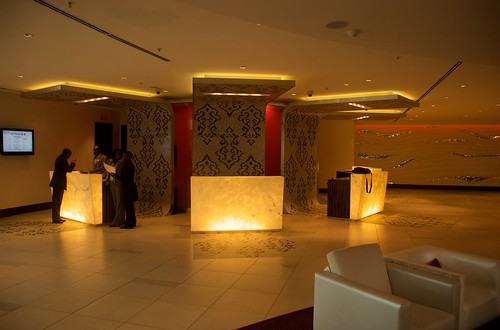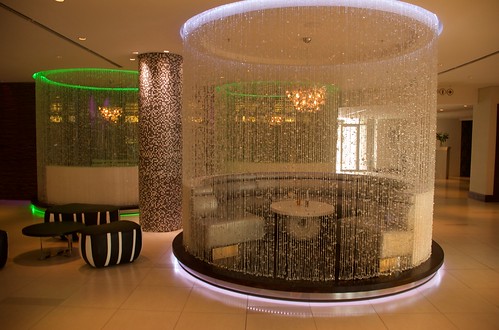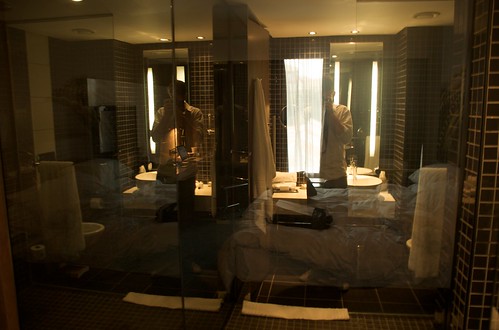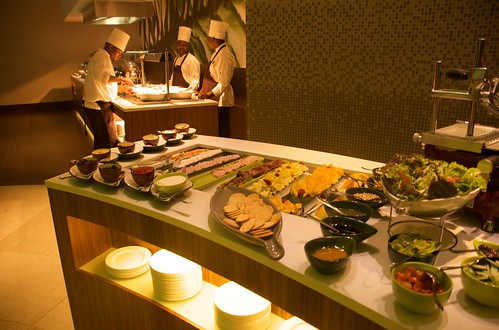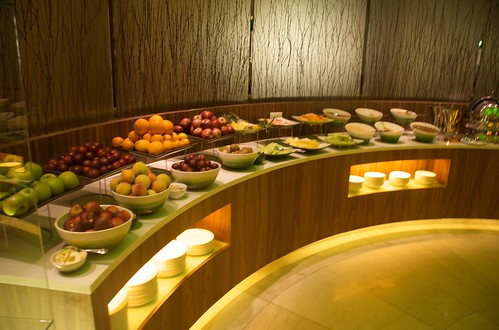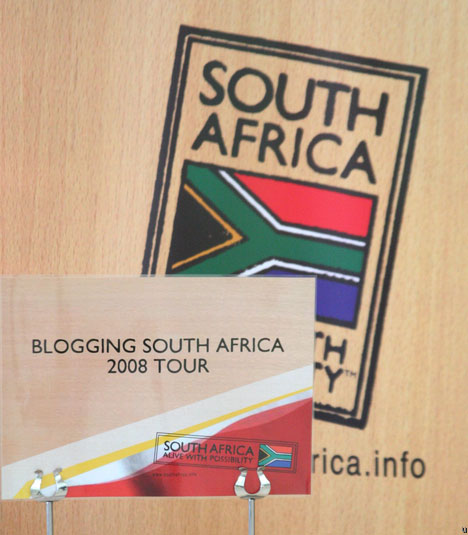Archive for 'Culture & Arts'
Helicopter Ride Over the Cape
Same Information, Different Representation
Where to go when you get to ! Khwa ttu, the San Culture and Education Centre near Darling. Beautiful and fascinating place, incidentally, on which more posts coming.
Three Notes on World AIDS Day
As I wrote a couple weeks ago in an email to the Rising Voices mailing list, I have mixed feelings about World AIDS Day. On the one hand, it can help create the illusion that we only need to think about AIDS one day out of the year and then somehow everything will get better. On the other hand, December 1st can be an attention-grabbing starting point for sustained campaigns that advocate for the rights of HIV-positive individuals, like the AIDS Rights Congo project is doing; spread preventive education with creativity, like the REPACTED project in Kenya does on a regular basis; and amplify the voices of marginalized communities, like the Drop-In Center in Ukraine.
Here on the South Africa Bloggers Roadshow, which is meant, in the words of its sponsors, to “tell the story of South Africa,” there is no mention of HIV or AIDS at all. (Nor violence against women, for that matter.) Graeme Addison, Durban’s Dagga King and the organizer of our itinerary, apologized on the first day for the exclusion. So, let me take a few minutes to mention three relevant notes.
To Test or Not to Test: Thandanani’s Question
First, I have uploaded a video which features excerpts of a really fascinating conversation I had last Friday with Thandanani, Sinempilo, and Zwelithini. Much of the conversation was Thandanani explaining why he didn’t want to know his HIV status and Sinempilo and Zwelithini trying to convince him that he should get tested. But there are other fascinating parts as well. I learned that in South Africa low income mothers are given 200 rand a month when they become pregnant. The three felt that this policy contributes to the spread of HIV and AIDS because it encourages people to have unprotected sex as a way of generating income. All three also felt that if Black South Africans go back to their indigenous cultures rather than trying to emulate the West that HIV transmission would be reduced. For one, they’d be spending less time going out to clubs, drinking, and hooking up, but also there are parts of Zulu culture like the traditional virginity test which encourage abstinence. Enjoy the conversation:
Project Masiluleke
Second, I must take off my hat to Miss Zinny Thabethe, who I first met at Pop!Tech and then was able to see again last week in Pietermaritzburg. Zinny is used to a good deal of attention. In fact, if you open up Southern Africa’s edition of Cosmopolitan Magazine there she’ll be, one of South Africa’s “30 fun and fearless women.” You can also see her speaking at PopTech and featured in National Geographic magazine.
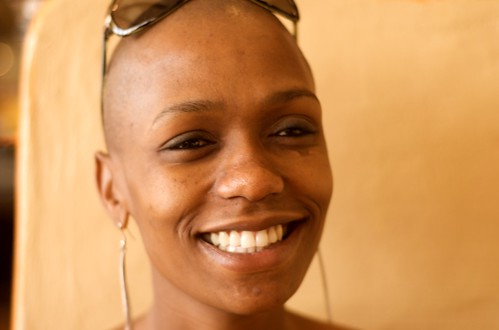
Zinny’s newest initiative is Project Masiluleke. As I wrote last month, PopTech is transforming from a mere annual conference to a constant social change incubator. In addition to its Social Innovation Fellows program, the PopTech group will also select inspiring projects which are ripe with potential and put them in “the accelerator,” which essentially means introducing them to all the right people in order to make the project a success.
Project Masiluleke is the guinea pig project of the Accelerator. There are two major parts to the project which will officially launch sometime this spring. In South Africa most mobile service providers offer a feature in which you can send someone a free text message asking them to call you if you are out of airtime. The message itself is only around 30 characters, which leaves more than 100 more characters of space. Rather than filling that space with advertising, as would be expected, South Africa’s MTN network will append public service messages asking its subscribers to get tested and offering counseling resources. The second major part of the project is an at-home HIV testing kit designed by New York City-based Frog Design. We saw a demo of the kit at PopTech and the thinking that went behind it is extremely impressive.
Blogging Positively
On Wednesday Serina and Daudi will be co-hosting a live chat about how citizen media can be used to supplement and improve the mainstream media’s coverage of the AIDS epidemic. Details on how to participate in the chat are on Serina’s blog. Also make sure to check out Juhie’s post on Global Voices about World AIDS Day, our special topic coverage page, and the Global Voices Google Map of HIV-positive bloggers around the world that Juhie put together with Solana.
Enter a New South African Chapter
This past week, I touched down in dazzling South Africa, the beloved country I last set foot in 14 years ago and before that 24 years ago, both times living in various suburbs of Johannesburg.
Before embarking on two long Virgin Atlantic legs, I found it difficult to remember my first impressions as a young teenager and so I dug up old journals from the time and read as many pages as I could sift through over the course of 36 hours.
Both times I lived here the country was obviously under white rule – Botha and then later De Klerk, the latter who paved the way to a free South Africa, one which would embrace one-man one-vote and change party politics.
Before the intense blogging expedition which would begin later in the week, I found it necessary to walk the streets of Cape Town, to try to make sense of what was and what now is. The markets, art galleries, jazz bars, portside restaurants, gift shops, alley ways, office buildings, architecture, the people on the streets and behind café windows.
There it all was to smell, taste, hear, view and take it all in as if yesterday still was. But I was no longer a teenager and Cape Town wasn’t a 1984 or a 1992 Cape Town, yet would it still feel, smell, taste, sound and look the same?
There’s something very primal about a year abroad as a student. Ask anyone who has done one. You somehow adopt your exchange country in a way you would a daughter or son. It becomes part of you and you it. You can’t forget it; its voices, shapes, sounds and smells are integrated into your DNA. It’s a primal kind of relationship and so returning years later becomes a primal kind of experience.
There’s something about the African sky, the air and the sounds at night outside your window that are distinct even if the skyline or a distant tree might remind you of somewhere else. This is true whether you’re in a suburb, a rural farm or an urban townhouse. While construction was in full force outside my guest bedroom window in a Cape Town neighborhood, it was ‘soft’ construction, African style.
You could hear the tinkering of tools with a deadening silence in between, the kind you can imagine hearing on a small-town American street in the 1940s. No large boisterous drills like the ones outside my San Francisco flat, the kind of noise that leave no room for anything other than ‘it,’ a reminder that change is happening outside you can’t control.
What a treat my necessary Cape walk was…….diving into any and every art gallery along Shortmarket, Long, Waterkant, and Loop reminded me of the creative talent and tasteful sense of design South Africa introduced me to in the 80s and 90s. It was still here, but perhaps less packaged in a neat bow in a gallery like in Sandton’s shopping center. I quickly learn that there’s a ton of interest in South African’s art and design in Dubai, whose elite even place custom orders they’re willing to wait on for months.
The new South Africa. Eager and energized to see what it has become, I meandered through alleyways, with wide child-like eyes looking for visible changes. “It’s hard to remember how it was before,” says my old friend Matthew, who worked with me in London selling art so many moons ago. Of course there’s the infusion of hamburger and retail chains. Starbucks has thankfully not yet made its way into its borders.
The then dark haired Matthew now has gray hair and is the CEO of a technology start-up in Cape Town’s city center. Together with his wife who moved here from Columbia sixteen years ago, we took in seafood and Stellenbosch wine. No doubt they witnessed someone returning back in time to a place he knew from childhood, far back into a distant past, one which had relics of Colonial Africa, segregated neighborhoods with high walls, all white schools with formal smartly ironed uniforms, and windsurfing along the Vaal River.
A time when Zimbabwe and the Transkei were popular weekend destination points for families. A time when the topic of discussion was primarily cricket and soccer. A time when we’d go on frequent hikes in the Drakensberg and attend afternoon braais on suburbia lawns, rich and gated suburbia lawns a mere mile from the Soweto township, where we’d often see smoke in the air and hear guns off in the distance.
In the early nineties, we sipped champagne and ate strawberries and cream and talked about the coming elections and what it would mean for commerce, for tourism, for sports, for the next generation, for peace of mind at last. Those who prayed for change, marched for change, put their lives at risk for change – white and black – would now have peace of mind at last.
While violence has risen in recent years, scams have become a part of life and HIV/AIDS in the country is now an epidemic, one which the entire world knows about and mourns over, South Africa remains a dazzling place. This beloved land where the white European and black African met in the 17th century and are now learning to live together equally and peacefully four centuries later.
Harmony must prevail if people wish to stay and stay they must for South Africa to continue to thrive economically and socially. If they lose their best talent to Australia, Canada, the states and the UK, the country will have to turn back the hands of time.
While I hear about white flight on one side and refugees flooding into Johannesburg’s Hillbrow on the other, I also hear about people’s love for a beautiful and yet tragic land they cannot leave and so they stay and figure out a way to make it work.
And within my first week here, I witness this commitment to making things work internally rather than a loss of hope. I meet inspired and happy white and black South Africans who love this country in a way I’ve rarely experienced elsewhere in the world.
A drive down the coast or a week in the bush will tell you the answer why among numerous other things. It’s one of the most beautiful, passionate, diverse and intense countries I’ve ever visited. Forward wind the clock to 2008. Let a new South African chapter begin.
“A Very Exciting Experiment”
Michael Spicer, International Marketing Council trustee and CEO of Business Leadership, welcomed the bloggers at a lunch at Moyo, Zoo Lake. Here’s what he said:
We are here for the kick-off of a very exciting experiment. At the IMC, we’re in the business of telling South Africa’s story, and helping others tell it. We aim to promote this wonderful country of ours both as a destination for investment and travel, and as a source — a source of goods and services, a source of ideas and innovation, a source of hard earned wisdom in dealing with some really tough challenges.
Our guests, as you know, are well-established bloggers and they are here to blog about South Africa.
What’s a blogger? You might say that a blogger is to a traditional journalist what a hedge fund is to your father’s pension fund.
Bloggers and hedge funds don’t operate under the constraints that bind their traditional brethren, although, given present circumstances, how long that remains true for hedge funds remains to be seen.
But bloggers are unlikely to have their wings clipped any time some. They can call the shots as they see them in any medium they chose -words, pictures, sounds, video – and with very little overhead.
With flair and imagination and with something important, interesting or useful to say, they can develop huge followings and move public opinion.
Take the Huffington Post, where Mona Gable blogs. It had a major impact on the recent American election.
Take Eliane Fioret’s Ubergizmo. Her site helps millions all over the world decide which gadgets to spend their money on. Sony really cares what she says.
Graeme Wood will be contributing to several blogs while he is with us. His day job is at the influential Atlantic Magazine, where he blogs alongside Andrew Sullivan, whose blog is so successful that the IMC has bought ads on it.
The IMC has brought traditional journalists to South Africa over the past several years along with various public intellectuals. Most have gone home and written about their experiences some weeks or months later, or whenever they could get published.
By contrast, a hallmark of blogs is real time communication. If you’ve got an Internet connection, you have the potential to get yourself read, seen and heard instantaneously all over the world.
Another thing about bloggers is that they are constantly sifting through the vast quantity of material that gets added to the web every minute, looking for interesting items to link to or embed on their own on their own blogs. So the good stuff gets amplified.
Just think about that famous YouTube video of the herd of buffalo rescuing a calf from lions and then a crocodile. The viewership for President-elect Obama’s official YouTube offerings pales by comparison with the number of people who have watched that clip taken by a visitor to one of our game parks.
Let’s say for the sake of argument that Andrew Sullivan is wowed by something his colleague Graeme Wood posts on the americanscene.com, or is captivated (as who could not be?) by a Zadi Diaz video. He cites and links to them. Suddenly a vast new set of eyeballs is on their work. And some of those eyeballs will be owned by people who will amplify Graeme’s post to a whole new set of eyeballs.
And none of the eyeballs will belong to someone who is sitting passively in front of a TV set. Rather they will be owned by someone who is actively interacting with blogs and other websites — and therefore awake.
For the next eight days our bloggers will be on a whirlwind tour of the country. They’ll be going to places both on and off the beaten track. Our hope is that they will find material and inspiration for some great blog posts which will echo through the blogosphere – and also linger there to be found in Google searches for months and years come.
Our bloggers will be seeing South Africa from many different perspectives. From the deck of a state of the art De Beers ship dredging diamonds for the floor of the Atlantic. From 3.7 kilometres underground at AnglogoldAshanti’s Tau Tona mine, the world’s deepest. From balloons drifting serenely over the Magaliesberg.
They’ll be seeing South African satellites and our bid to explore the farthest reaches of time and the universe with the Square Kilometre Array.
They’ll be seeing where history began at the Cradle of Humanity, and where it was made and continues to be made in Soweto.
One point I’d like to emphasise to our guests is this. We’re introducing you to people and places we are proud of, and which we think show that South Africans are a creative lot who do difficult things well. But we did not bring you here to be praise-singers. We have no doubt that you will call it as you see it and we would not want it any other way. We will not tamper with you kneecaps for telling the truth as you see it. We value that truth.
Before closing, I’d like say a special word of thanks to everyone in the Brand South Africa team who has worked so hard to bring this project together. And I would also like to express our deep appreciation to Vodacom for so generously supplying with the hardware and the bandwidth to make this project possible.
With that, good luck, bloggers, have fun, blog on and blog well.
Getting Connected
Vodacom, lile Q, supplies the latest gear.
Johannesburg’s Rosebank Hotel
Are you heading to South Africa and worried that you won’t be able to enjoy the very best of metrosexual hospitality. Check out the Rosebank Hotel, probably the only hotel I’ve ever been to which is much more impressive in person than on its website. It is just two blocks away from the Rosebank Mall and, for all you cyber-enthusiasts, from the offices of the African Commons Project.
The lobby has lots of smiling faces and the kind of lighting that makes everyone look pretty:
Plus there’s this underwater garden lounge type thing that looks like the perfect place to drink too many gin and tonics:
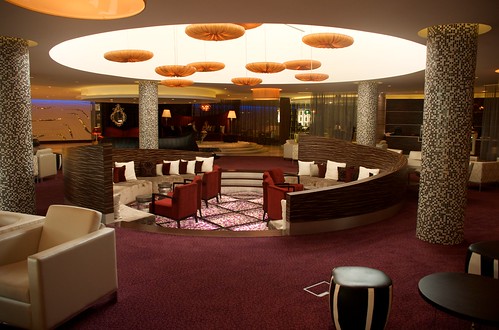
Also appropriate for confined debauchery are the cocktail pods:
The rooms have all the added touches: slippers by the bed, flower petals on the pillows, and, get this, mirrored-glass that looks out on the rest of the room from the shower:
All that was missing was the accompanying super model. Well, you don’t get everything.
Most impressive of all, though, was the restaurant and its mammoth breakfast spread:
The rest of my photos are on Flickr.
Blogging Tour South Africa Kick Off
I am invited by the International Marketing Council of South Africa to see some of their best technology, and to get a sense of the country. All expenses are paid but I will write what I want about this trip. Africa is not the first place that comes in mind when we think about broadband connection and technology, so I thought that it could be good to go and check out what is going on there. I arrived two days ago in Johannesburg at the Rosebank Hotel and I met the other bloggers last night during an instructive dinner. Check out the photos by clicking on the gallery button, all names will be written later when I confirm the right spelling.
During the week, we will visit the deepest mine in the world (3.7 km underground!), and the largest diamond mining ship in a government secured area, this is for sure backed by some serious technology! We will get a demo of the South African electric car and I will discover the latest Web apps that are coming up here.




